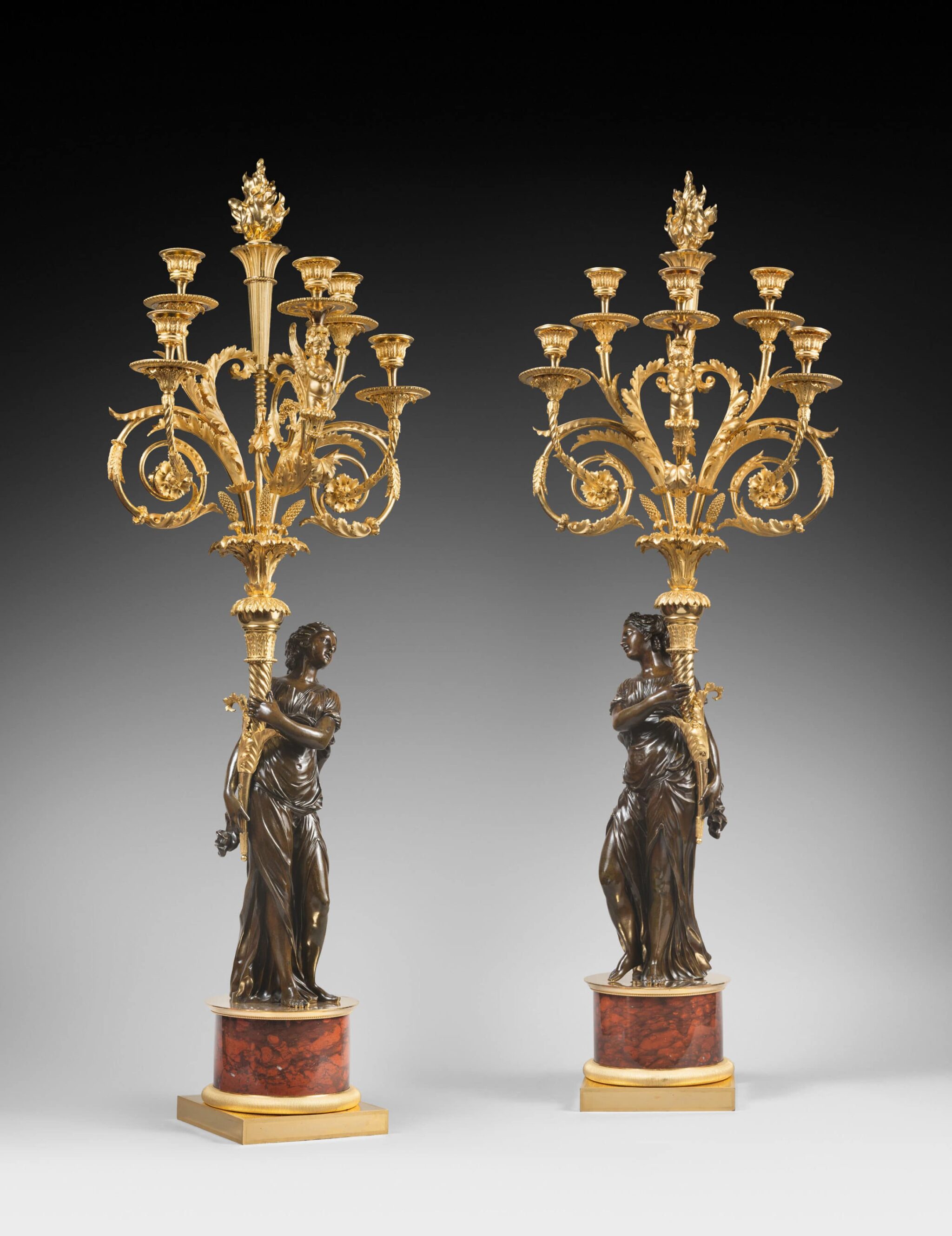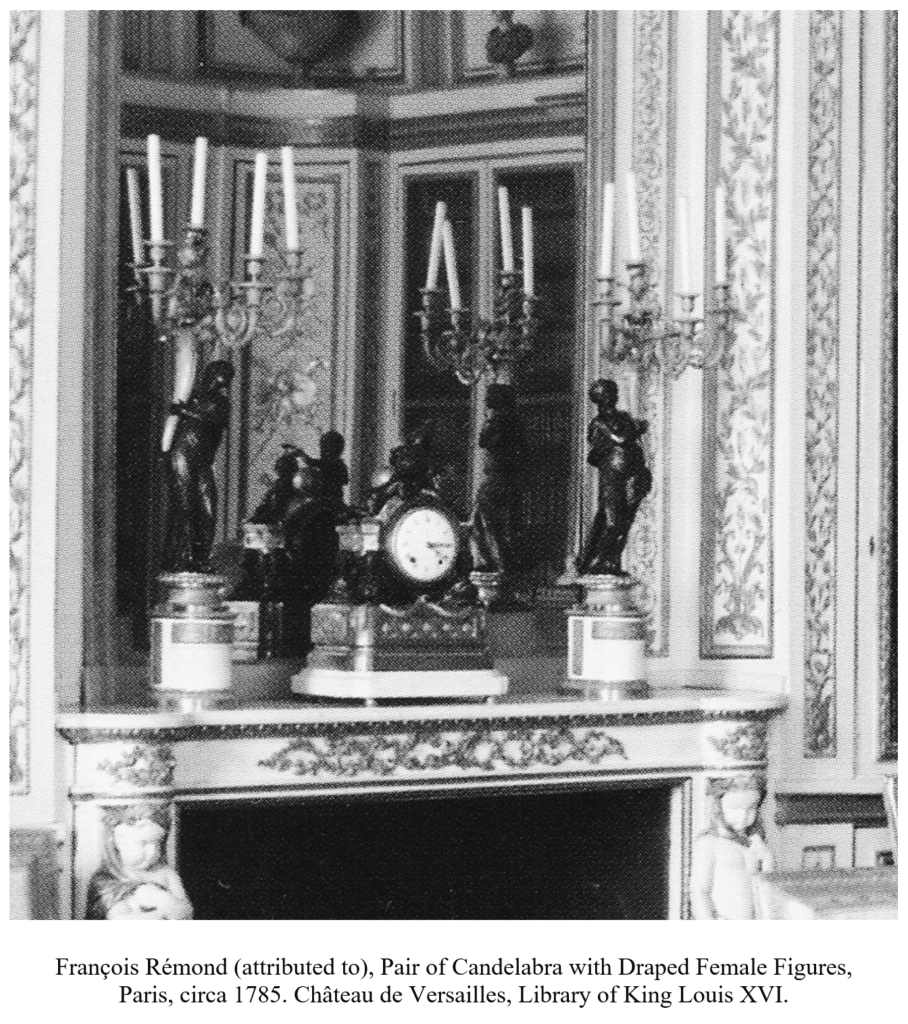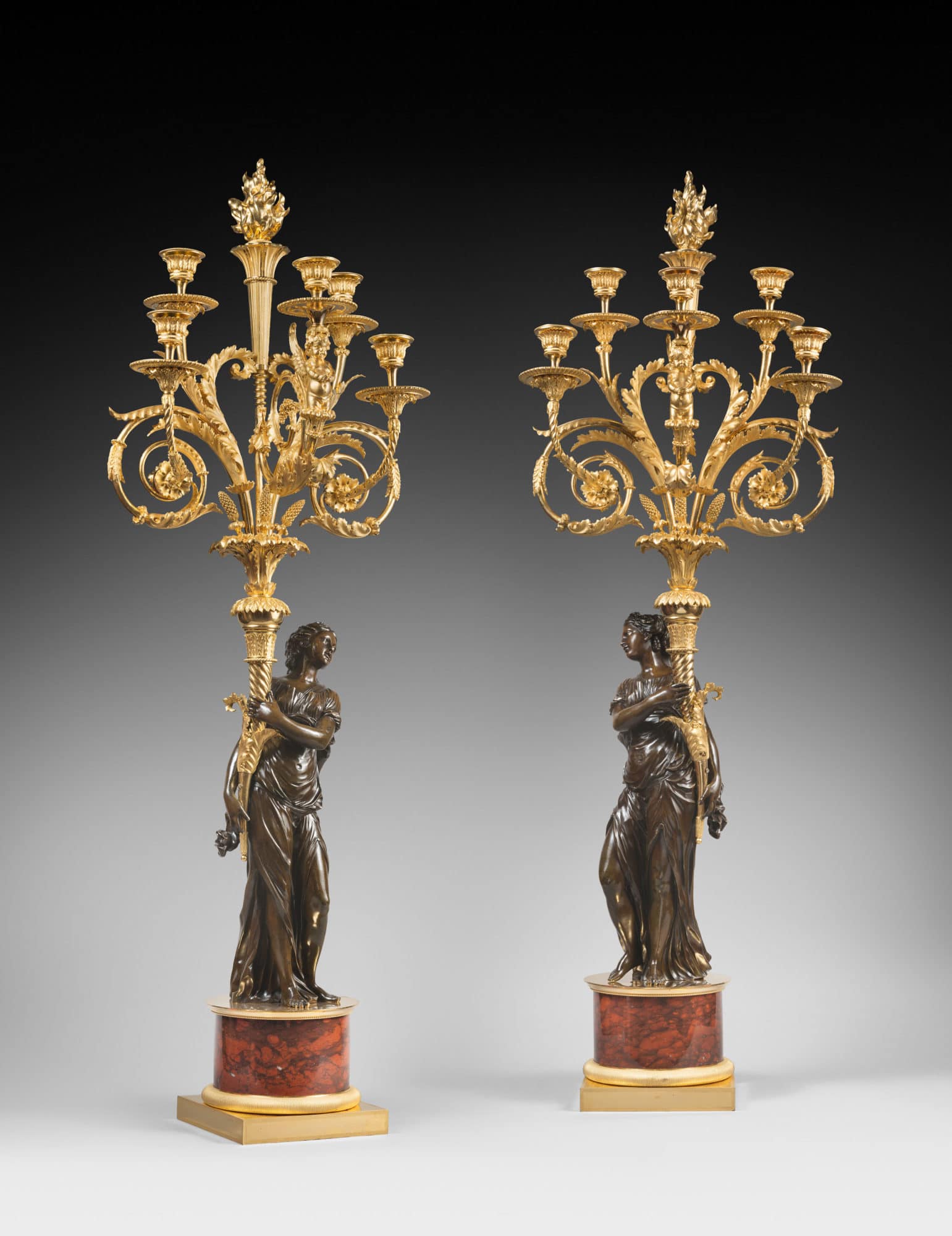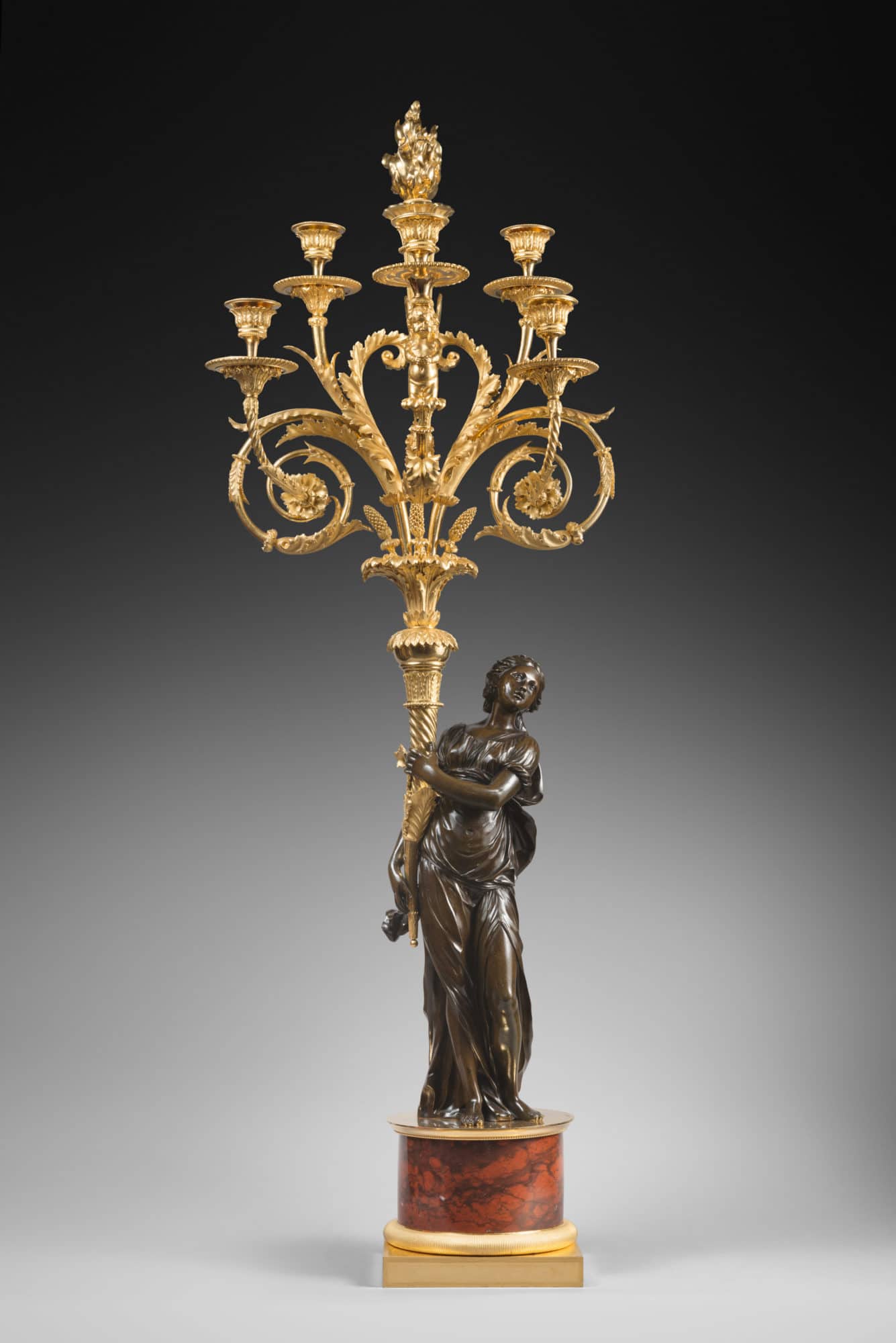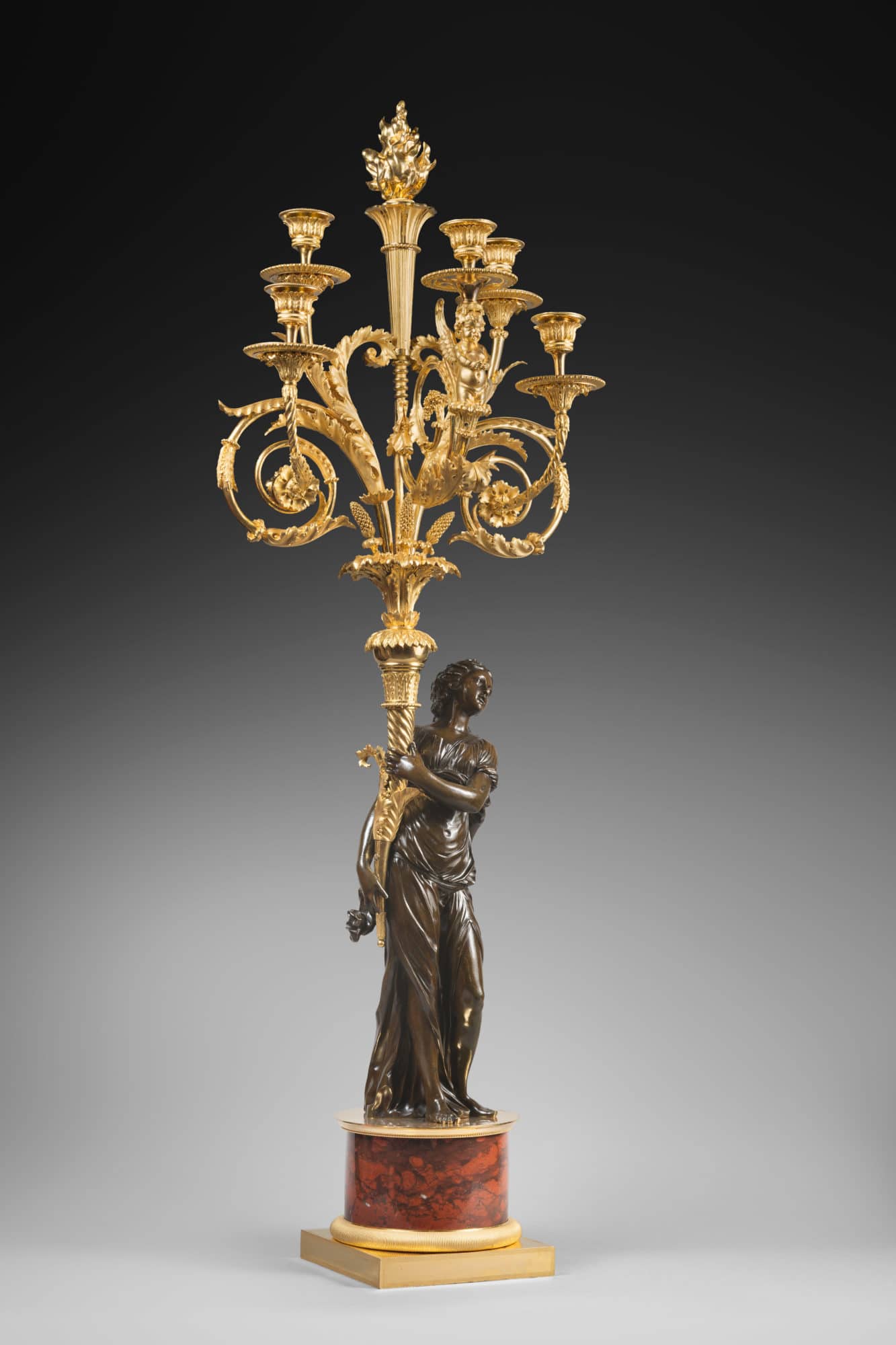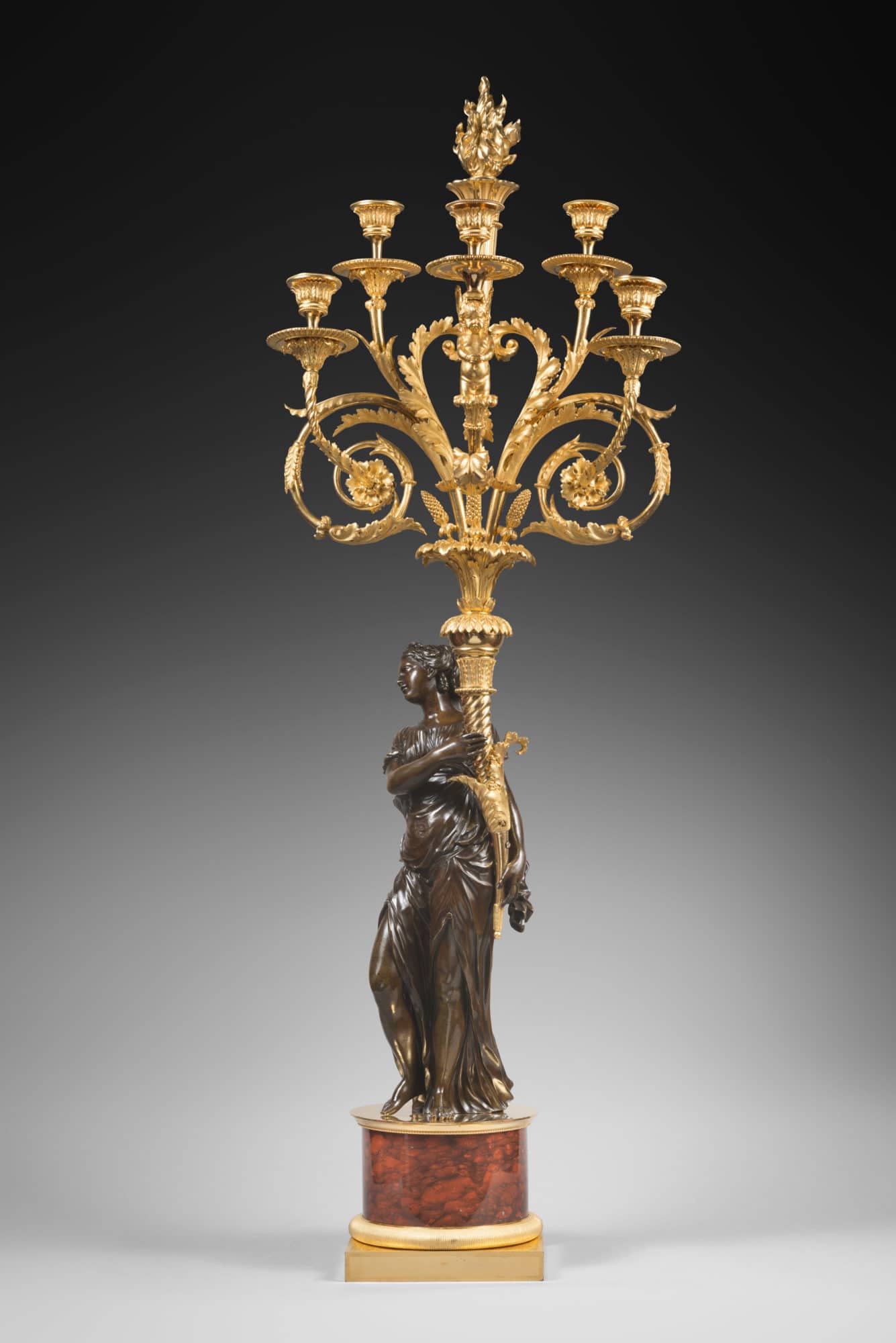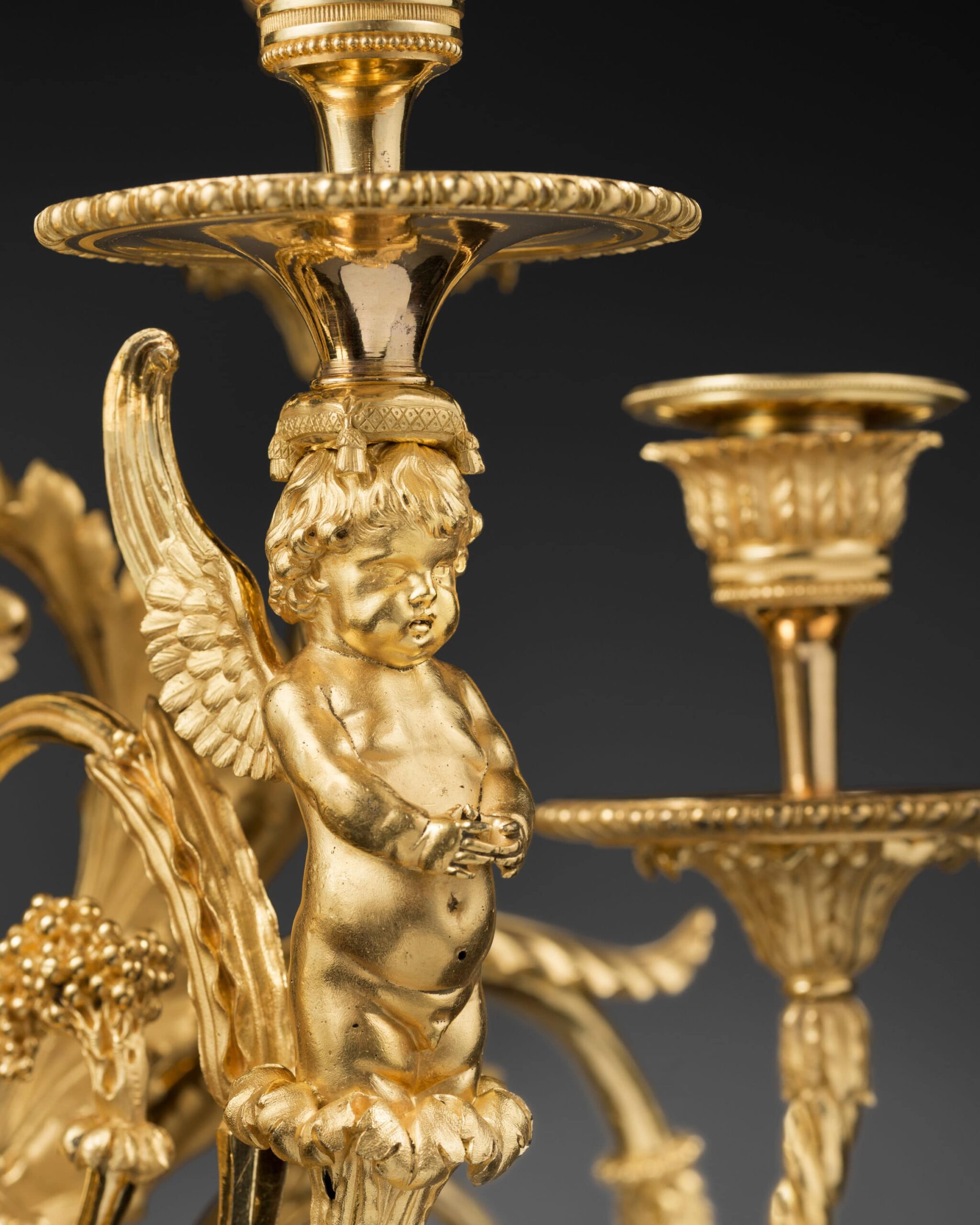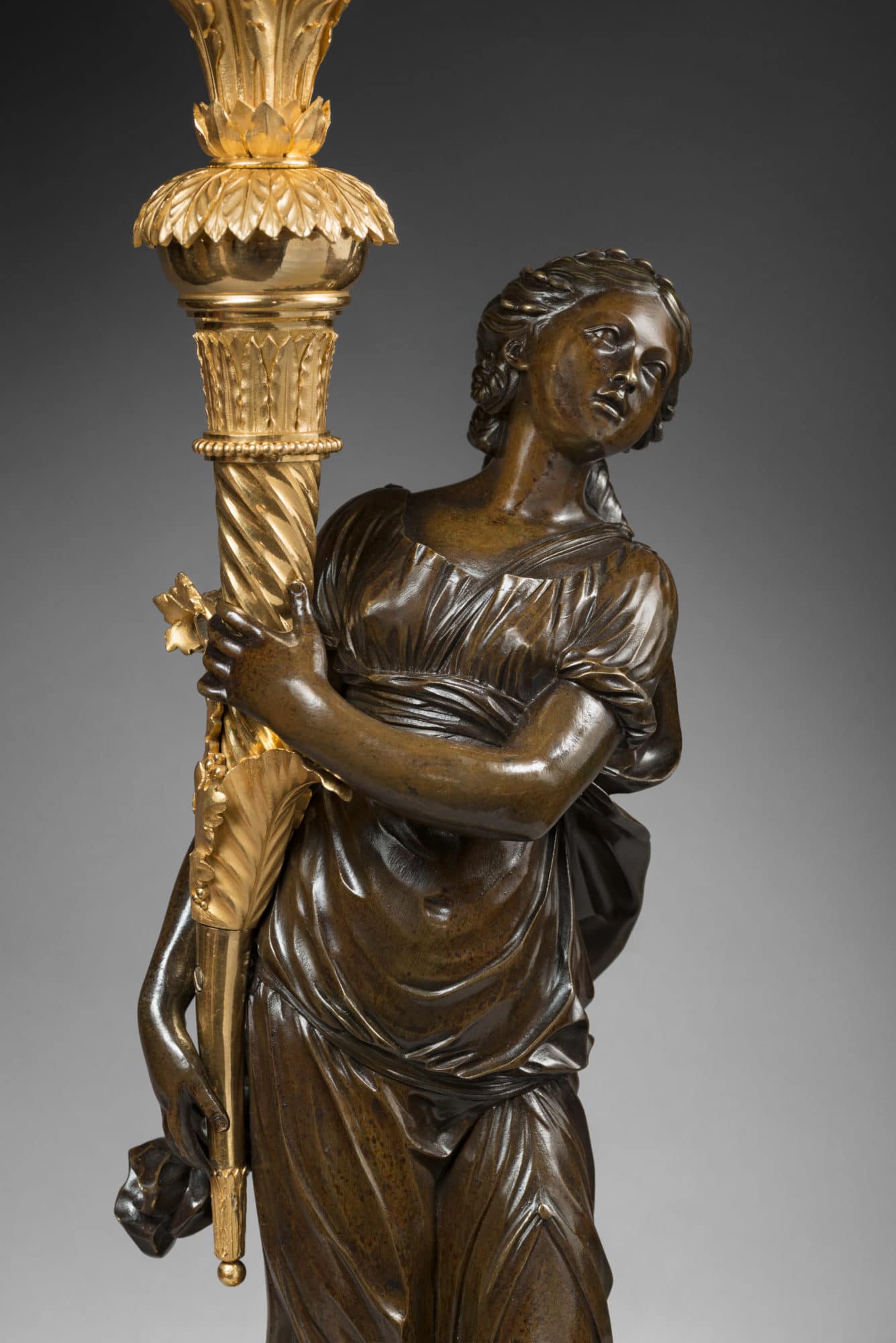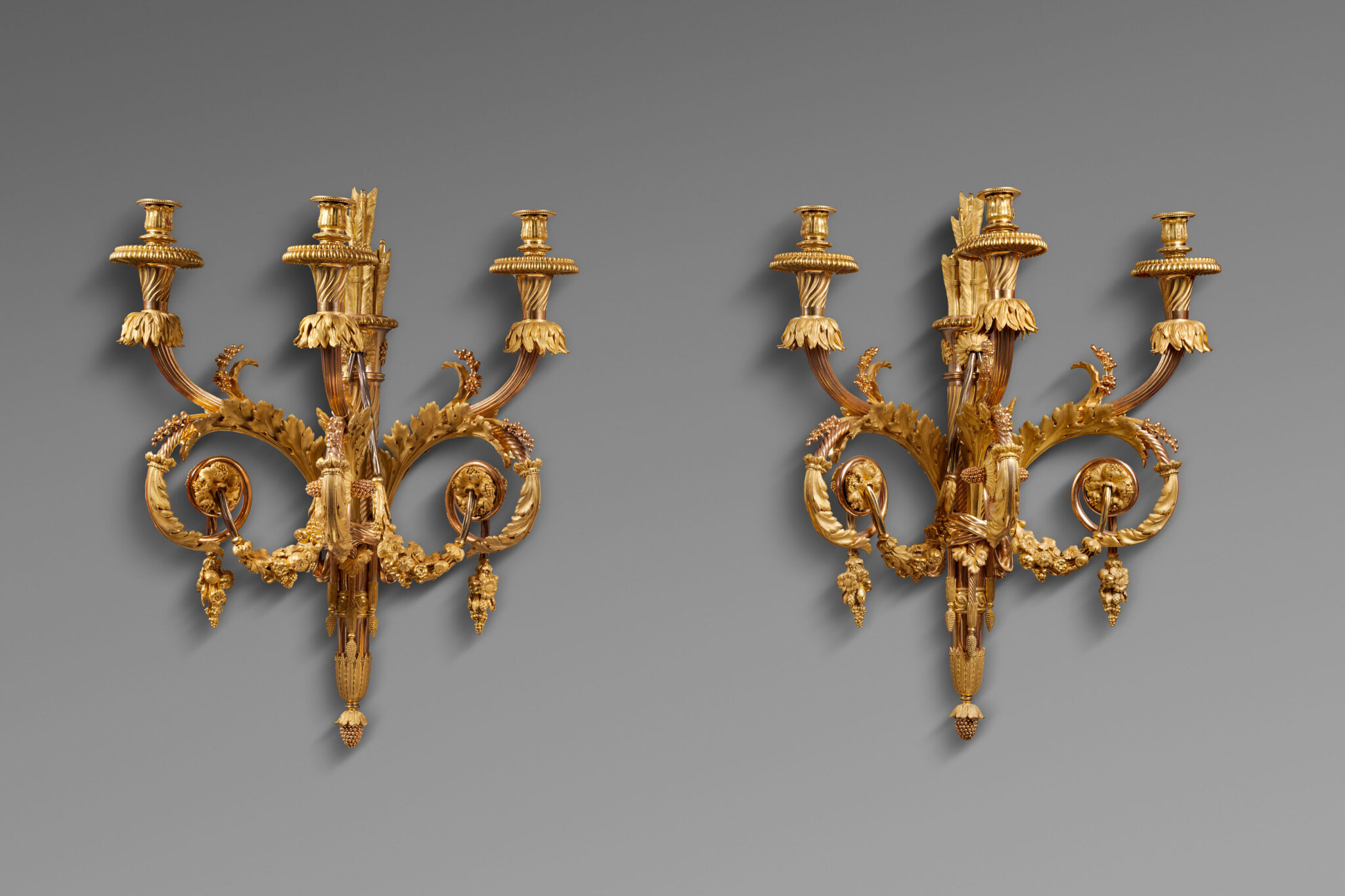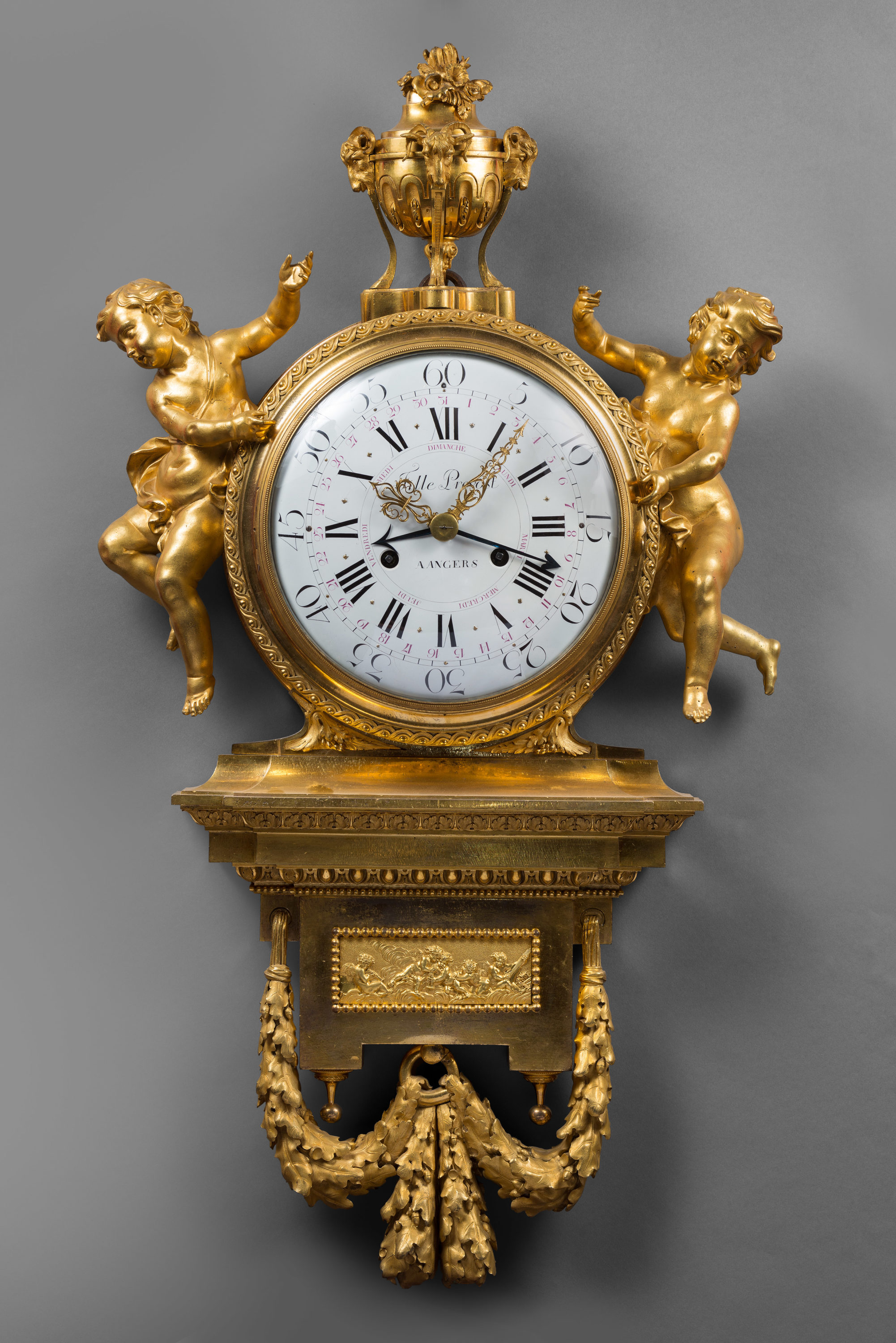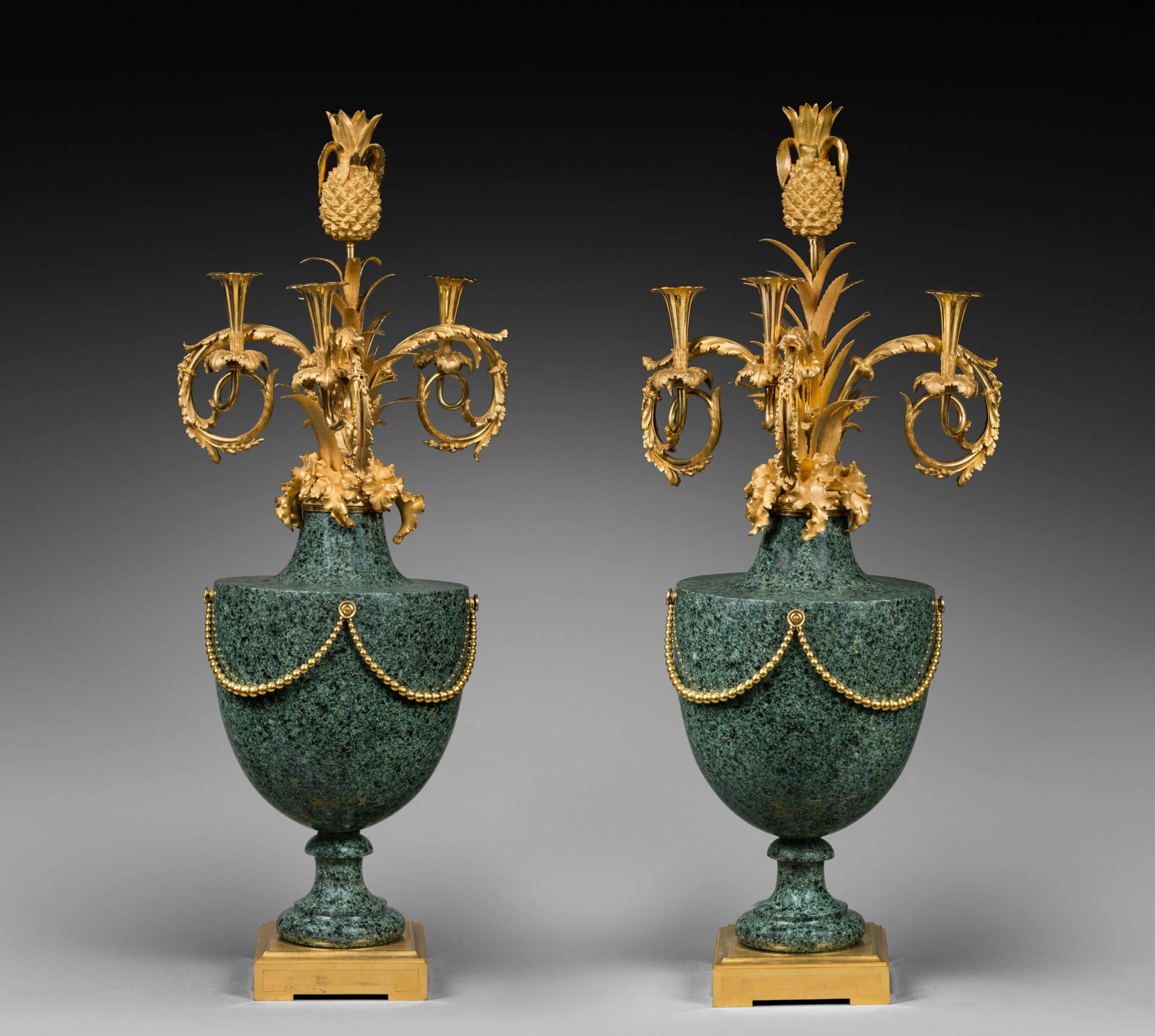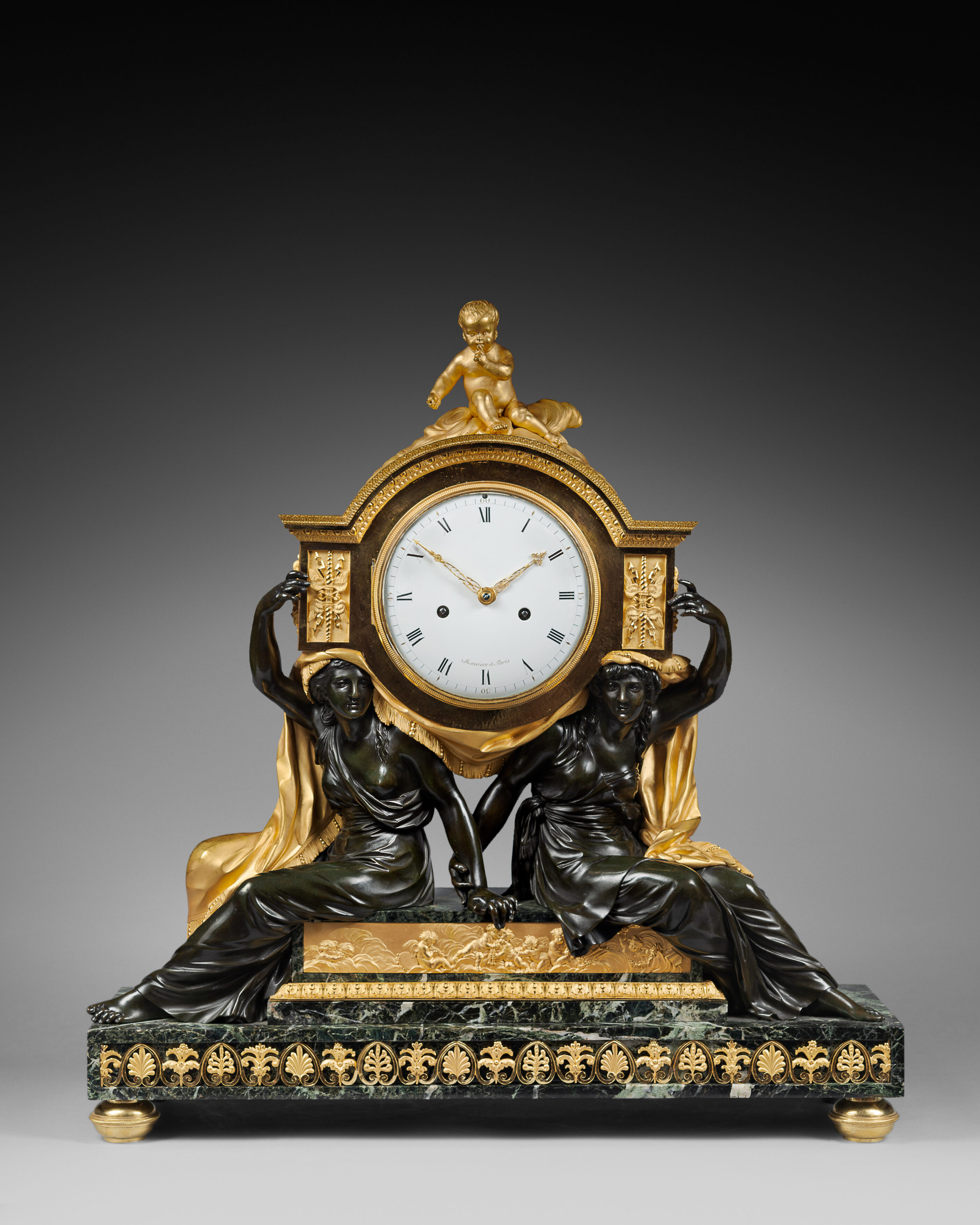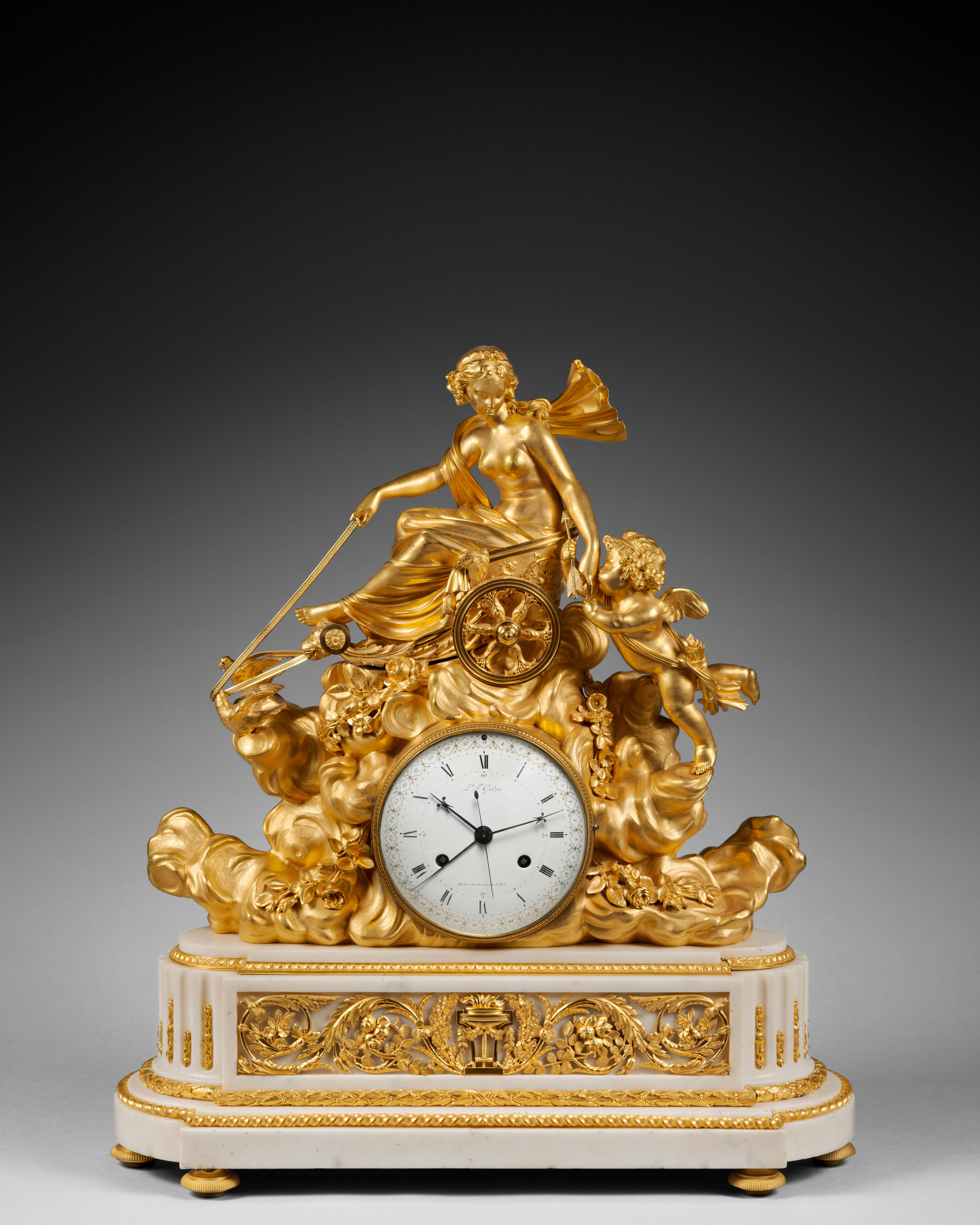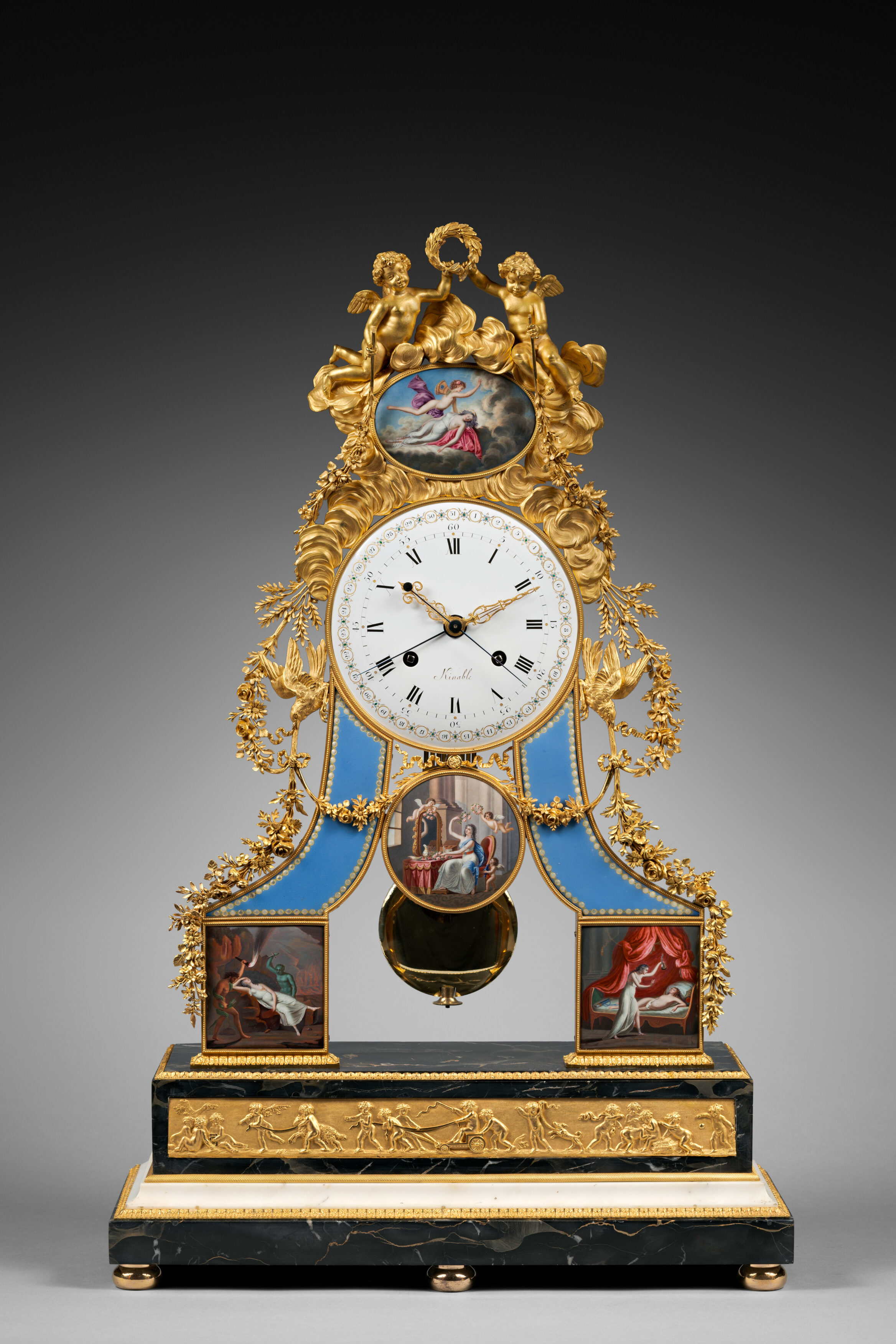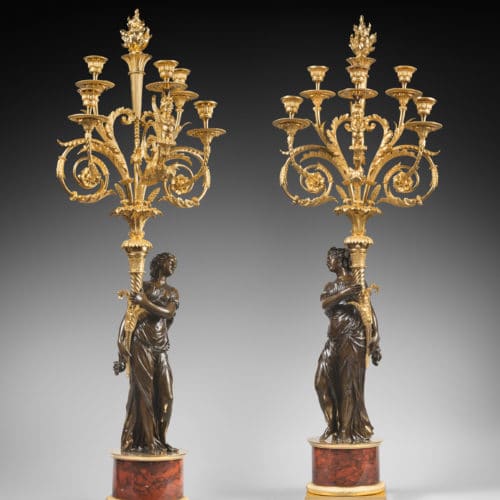Important Pair of Patinated, and Matte and Burnished Gilt Bronze and Red Griotte Marble Five-Light Candelabra
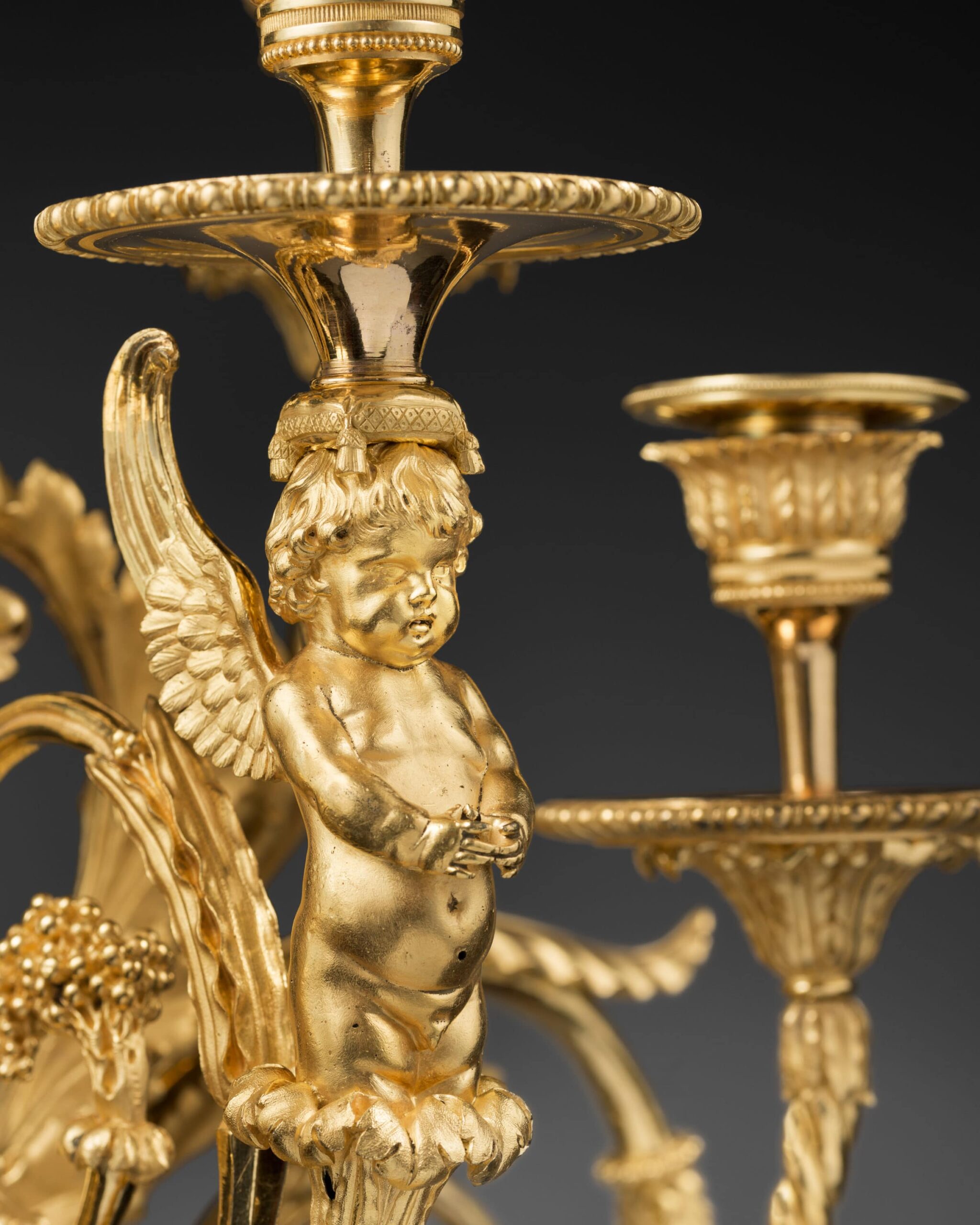
Attributed to François Rémond
Probably Made under the Supervision of Dominique Daguerre
Paris, late Louis XVI period, circa 1785-1790
Each candelabrum features a stem in the form of a magnificent patinated bronze, elaborately coiffed female figure wearing long draperies that reveal her body. Each nymph holds a bouquet of five lights, which emerges from a cornucopia decorated with leaves, spiral fluting, and bead friezes. The scrolling branches are adorned with acanthus leaves, seeded foliage, and rosettes. The front-facing branch features a herm in the form of a winged putto. The drip pans and nozzles are finely chased and adorned with bead friezes, leaves, and fluting. The central stem is in the form of a flaming torch. The red Italian griotte marble plinth, shaped as a truncated column, is decorated with a bead frieze and a wide, knurled band. It rests on a quadrangular base with burnished reserves within matted frames.
The unusual design of this rare pair of candelabra was inspired by the work of sculptor Etienne-Maurice Falconet (1716-1791), and in particular by a sketch that Saint-Aubin drew in the margin of the brochure of the 1761 Salon (see H. Ottomeyer and P. Pröschel, Vergoldete Bronzen, Band I, Munich, 1986, p. 254, fig. 4.7.1). Another source of inspiration was a torchère that Falconet made for the Château de Versailles (illustrated in Le Dix-huitième siècle français, Collection Connaissance des Arts, Paris, 1956, p. 150). The high quality of the chasing and gilding of the present candelabra support our attribution to François Rémond, one of the most important Parisian artisans of the period.
At the time of their creation Rémond worked almost exclusively for Dominique Daguerre, the most influential marchand-mercier of the time. Among the known candelabra featuring identical female figures, Christian Baulez has attributed one pair in the Wallace Collection in London to François Rémond (see “Les bronziers Gouthière, Thomire et Rémond”, in Versailles, deux siècles d’histoire de l’art, Etudes et chroniques de Christian Baulez, 2007, p. 416). A second pair, now displayed in the library of Louis XVI in the Château de Versailles (illustrated in M. and Y. Gay, “Horlogerie royale au Château de Versailles”, in Bulletin de l’Association nationale des collectionneurs et amateurs d’Horlogerie ancienne et d’Art, Spring 1997, n° 78, p. 19).
François Rémond (circa 1747 - 1812)
Along with Pierre Gouthière, he was one of the most important Parisian chaser-gilders of the last third of the 18th century. He began his apprenticeship in 1763 and became a master chaser-gilder in 1774. His great talent quickly won him a wealthy clientele, including certain members of the Court. Through the marchand-mercier Dominique Daguerre, François Rémond was involved in furnishing the homes of most of the important collectors of the late 18th century, supplying them with exceptional clock cases, firedogs, and candelabra. These elegant and innovative pieces greatly contributed to his fame.
Dominique Daguerre is the most important marchand-mercier (i.e. merchant of luxury objects) of the last quarter of the 18th century. Little is known about the early years of his career; he appears to have begun to exercise his profession around 1772, the year he went into partnership with Philippe-Simon Poirier (1720-1785), the famous marchand-mercier who began using porcelain plaques from the Manufacture royale de Sèvres to adorn pieces of furniture. When Poirier retired around 1777-1778, Daguerre took over the shop in the rue du Faubourg Saint-Honoré, keeping the name “La Couronne d’Or”. He retained his predecessor’s clientele, and significantly increased the shop’s activity within just a few years. He played an important role in the renewal of the Parisian decorative arts, working with the finest cabinetmakers of the day, including Adam Weisweiler, Martin Carlin and Claude-Charles Saunier, cabinetmaker of the Garde-Meuble de la Couronne, Georges Jacob, the bronziers and chaser-gilders Pierre-Philippe Thomire and François Rémond, and the clockmaker Renacle-Nicolas Sotiau. A visionary merchant who brought the level of French luxury goods to its highest point, Daguerre settled in England in the early 1780’s, having gone into partnership with Martin-Eloi Lignereux, who remained in charge of the Paris shop. In London, where he enjoyed the patronage of the Prince Regent (the future King George IV), Daguerre actively participated in the furnishing and decoration of Carlton House and the Brighton Pavilion. Taking advantage of his extensive network of Parisian artisans, he imported most of the furniture, chairs, mantelpieces, bronze furnishings, and art objects from France, billing over 14500£, just for 1787. Impressed by Daguerre’s talent, several British aristocrats, called on his services as well. Count Spencer engaged him for the decoration of Althorp, where Daguerre worked alongside architect Henry Holland (1745-1806). In Paris, Daguerre and his partner Lignereux continued to supply influential connoisseurs and to deliver magnificent pieces of furniture to the Garde-Meuble de la Couronne, which were placed in the apartments of Louis XVI and Marie-Antoinette. Daguerre retired in 1793, no doubt deeply affected by the French Revolution and the loss of many of his most important clients.
